
Fix Leaks Immediately

The average household’s leaks can account for nearly 10,000 gallons of water wasted every year. Common types of leaks found in the home are worn toilet flappers, dripping faucets, and other leaking valves. These leaks are often easy to fix, requiring only a few tools and hardware that can pay for themselves in water savings. Fixing easily corrected household water leaks can save homeowners about 10 percent on their water bills. See this helpful leak detection checklist from the EPA.
A simple way to detect leaks is to check your water meter at the beginning and end of a two hour period and avoid using water during this time. Make sure all water-using devices in your house are off, then locate your water meter. It is generally located near the curb in front of your home and covered by a lid. If there is a change after two hours, you likely have a leak.

Prevent Frozen Pipes and Sprinkler Systems
It’s important to turn off and properly drain your sprinkler system before freezing temperatures to avoid run off freezing on sidewalks and roadways and to prevent costly leaks and repairs.
- Turn off water supply at the main valve.
- Set the irrigation controller to the “rain” or “off” setting.
- Turn on each valve to release pressure from the pipes.
- Let the water drain out of the system or have it blown out by a professional to protect your system from freezing during the winter months.
Frozen pipes can lead to broken pipes causing major damage and water loss. Here are tips you can take to avoid frozen pipes:
- Cold winds can speed up the freezing process. Seal up openings where cold air can reach unprotected water pipes, like faucets.
- Foam or fiberglass insulation sleeves go a long way in keeping exposed pipes protected. Purchase these in advance to have on hand when you need them.
- DRIP FAUCETS: Turn on a slow consistent drip, NOT a steady stream (especially for plumbing located in exterior walls).
- Leave cabinet doors open under the kitchen and bathroom sinks to allow warmer room air to circulate over the pipes.
- If there are rooms without heating ducts, leave doors open to allow ambient heat in. Especially if the room is on the north side of the house.

Install High Efficiency Fixtures
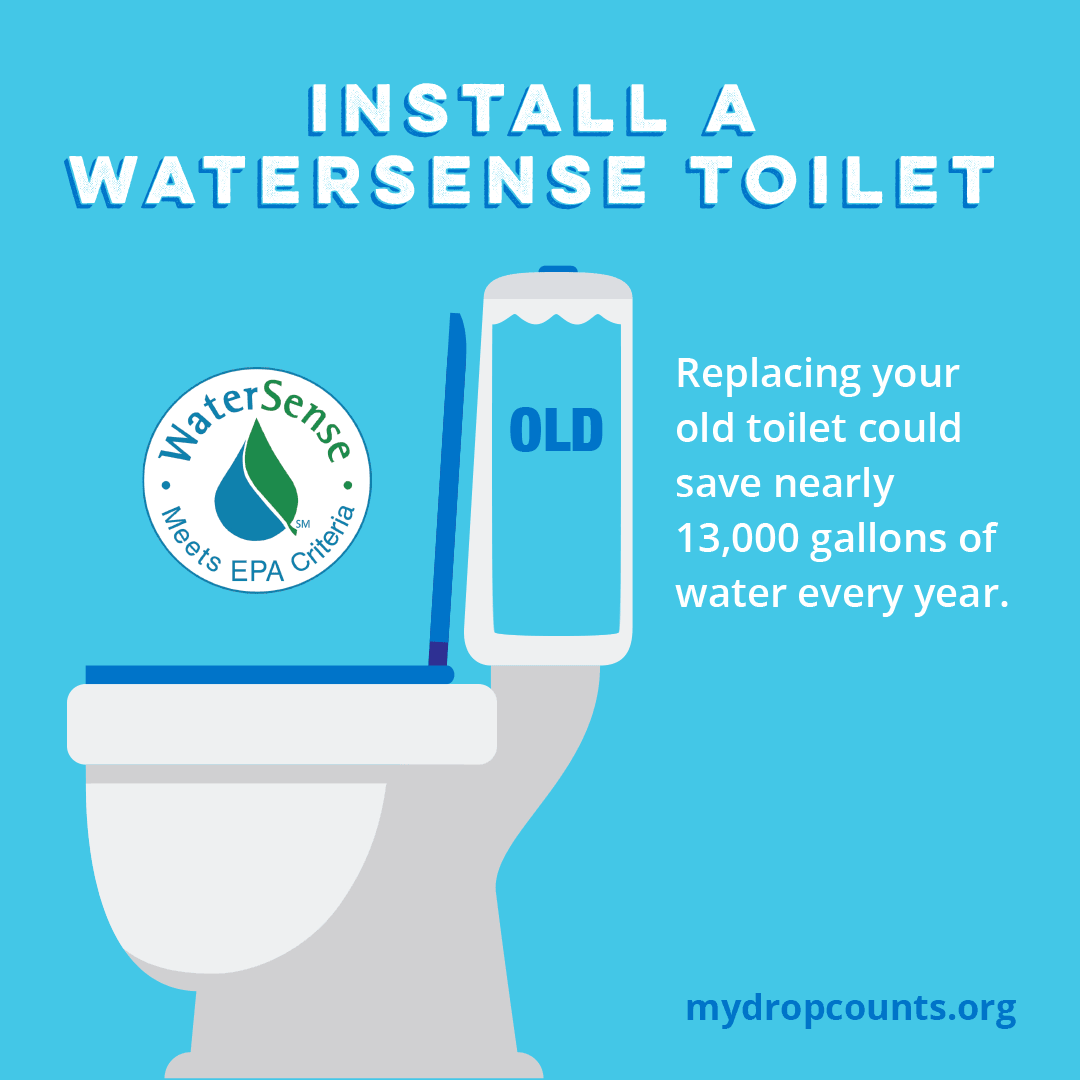
When purchasing a toilet, showerhead, or bathroom faucet, look for products with a WaterSense label. These products are backed by independent, third–party certification and meet EPA’s specifications for water efficiency and performance.
One of the biggest water users in the home is the toilet, up to 30% of the water used indoors may be flushed down the drain every day. By replacing old, inefficient toilets with WaterSense® labeled models, the average family can reduce water use for toilets by 20 to 60 percent. And, you may be eligible for a rebate on your new high-efficiency model.
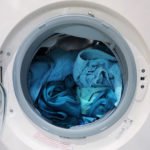
Only Wash When Full

Did you know that laundry equates to more than 20% of water consumption inside the average home? To save a load, wait till the washer is full before running, wear unsoiled clothes more than once before washing, and consider getting a high-efficiency machine.

Don’t Leave the Tap Running
Want to know how much is saved by turning off the tap?
- Turn off the water while brushing your teeth to save 2 gallons/day
- Don’t leave the water running while shaving to save 4 gallons/day
- Turn off the water while washing your hands to save 6 gallons/day
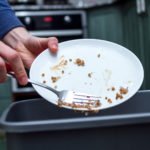
Scrape Dishes Before Washing Them

Rinsing dishes in the sink isn’t necessary and uses six times more water than using the dishwasher alone. Skip the sink and scrape plates, bowls and utensils before placing them in the dishwasher to save water and prevent clogged pipes and sewer backups.
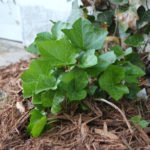
Practice Water-wise Landscaping & Irrigation
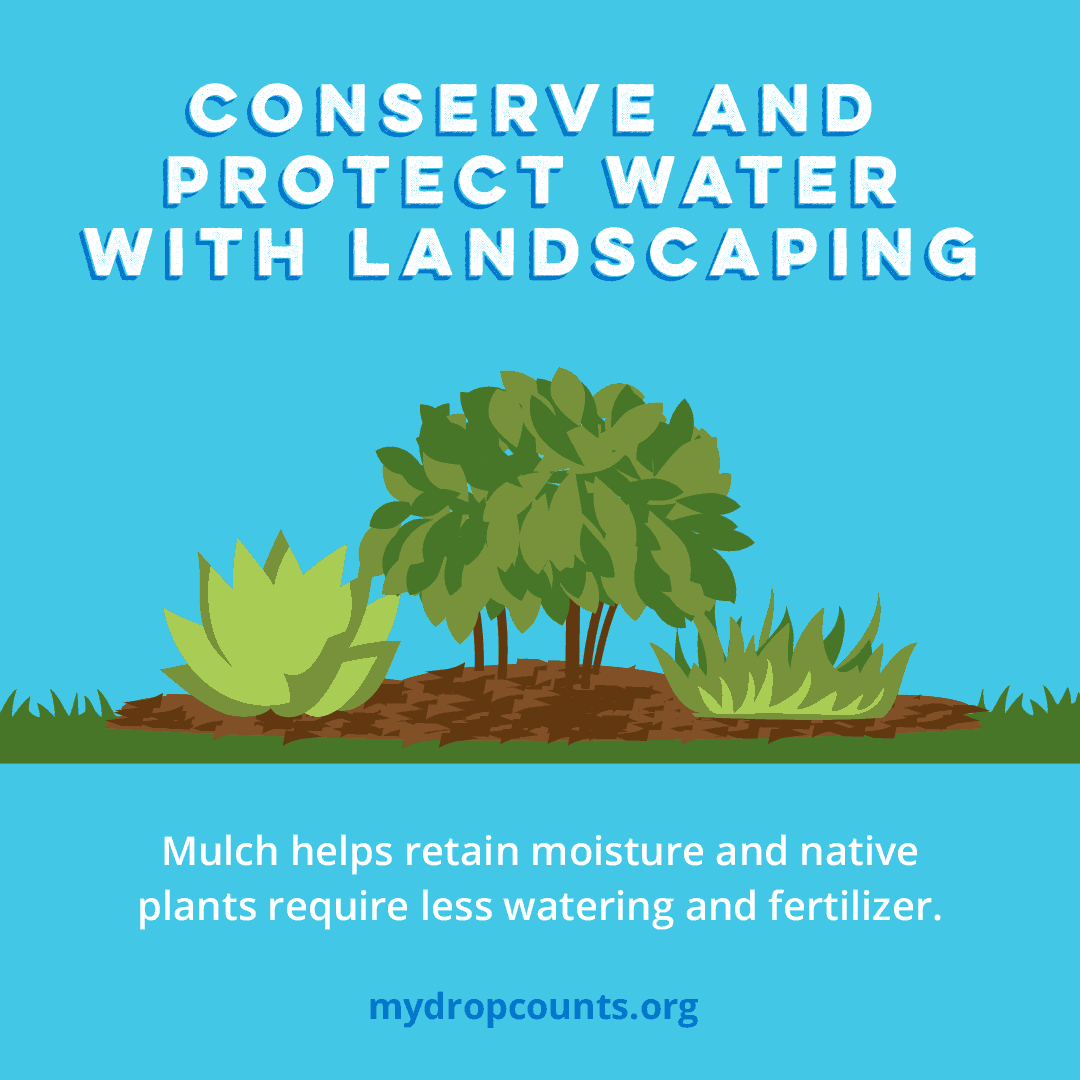
Water-wise landscaping can help conserve water and protect waterways from pollution.
- Use mulch and native plants that are adapted to local conditions requiring less water, fertilizer and pesticides.
- Set your sprinkler system to manual and only water before 10 a.m. or after 4 p.m.
- If you have an irrigation system, only use as needed and inspect for leaks and broken or clogged sprinkler heads.
- For additional guidance on how to maintain your irrigation systems and water efficiently, check out our irrigation system watering and maintenance guides.

Spruce Up Your Sprinkler

A sprinkler spruce-up involves four simple steps: inspect, connect, direct, and select. System maintenance can help save you a lot of money and water. Cracks in pipes can lead to costly leaks, and broken sprinkler heads can waste water and money. You could be losing up to 25,000 gallons of water and hundreds of dollars over a six-month irrigation season! Start saving today and spruce up your irrigation system.
- INSPECT For Breaks and Leaks: Running an irrigation system with broken and damaged sprinkler heads can cause overflowing and flooding of water on the landscape. WaterSense has a checklist to help you walk through each zone of your irrigation system and inspect for signs of water waste.
- CONNECT Sprinklers, Pipes, and Valves: Leaks can occur at the joints between sprinklers and the piping. Between irrigation cycles, look for areas of the landscape with water pooling on the surface; that could be a sign of an underground leak. Check the connections inside valve boxes to make sure all the valves and other components are securely connected and that the valves can shut.
- DIRECT Sprinklers For Best Water Coverage: Are you watering the driveway, house, or sidewalk instead of your yard? Irrigation water that lands on hardscapes goes to the stormwater drain instead of the landscape. Any sprinklers that are spraying onto driveways, sidewalks, or walls should be turned towards the landscape.
- SELECT a WaterSense Labeled Irrigation Controller: A WaterSense labeled irrigation controller uses local weather data or monitors the level of moisture in the soil to automatically adjust your irrigation schedule. WaterSense controllers can significantly reduce overwatering by applying water only when plants need it.
Check out EPA’s helpful brochure: It’s Time to Start a Sprinkler Spruce-Up! It provides simple instructions to help homeowners check in-ground irrigation systems. Sprinkler Spruce-Up is not just for spring; regularly check your irrigation system to ensure no water is being wasted.
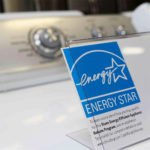
Choose Efficient Appliances
Appliances with an ENERGY STAR label have been certified to save both water and energy. For example, washing machines that meet ENERGY STAR criteria use 30% less water and consume half as much energy as conventional washers. A new ENERGY STAR-certified dishwasher uses less than half of the energy used when washing dishes by hand – and saves more than 8,000 gallons of water each year!

Care for Your Pool and Spa
Pool & Spa Maintenance Tips
Proper pool maintenance is important to save water, energy and money, as well as to protect landscapes, waterways and sewer systems.
For Conserving Water
Pools provide a fun and relaxing way to keep cool. However, if not maintained with water efficiency in mind, your pool could be sending water and money down the drain. Pools can lose water through evaporation, pool cleaning, leaks, and splashing. The U.S. Environmental Protection Agency’s (EPA) WaterSense® program has developed a Pool Water Efficiency Guide to help residential pool owners and maintenance professionals understand and address these issues to save water. Did you know? Using a pool cover can prevent up to 95 percent of pool water evaporation!
Commercial pool owners can find additional information at www.epa.gov/watersense in the WaterSense at Work: Best Management Practices for Commercial and Institutional Facilities which includes Commercial Pool and Spa Equipment guidelines.
For Protecting Water
Pool and spa water often contains chlorine, bromine and other chemicals. While these chemicals keep water clean and clear, they can damage the environment if pools and spas are improperly maintained or drained. Follow our Pollution Prevention Tips for Pools and Spas to help protect our rivers, lakes and streams.

Use a Commercial Car Wash that Recycles Water
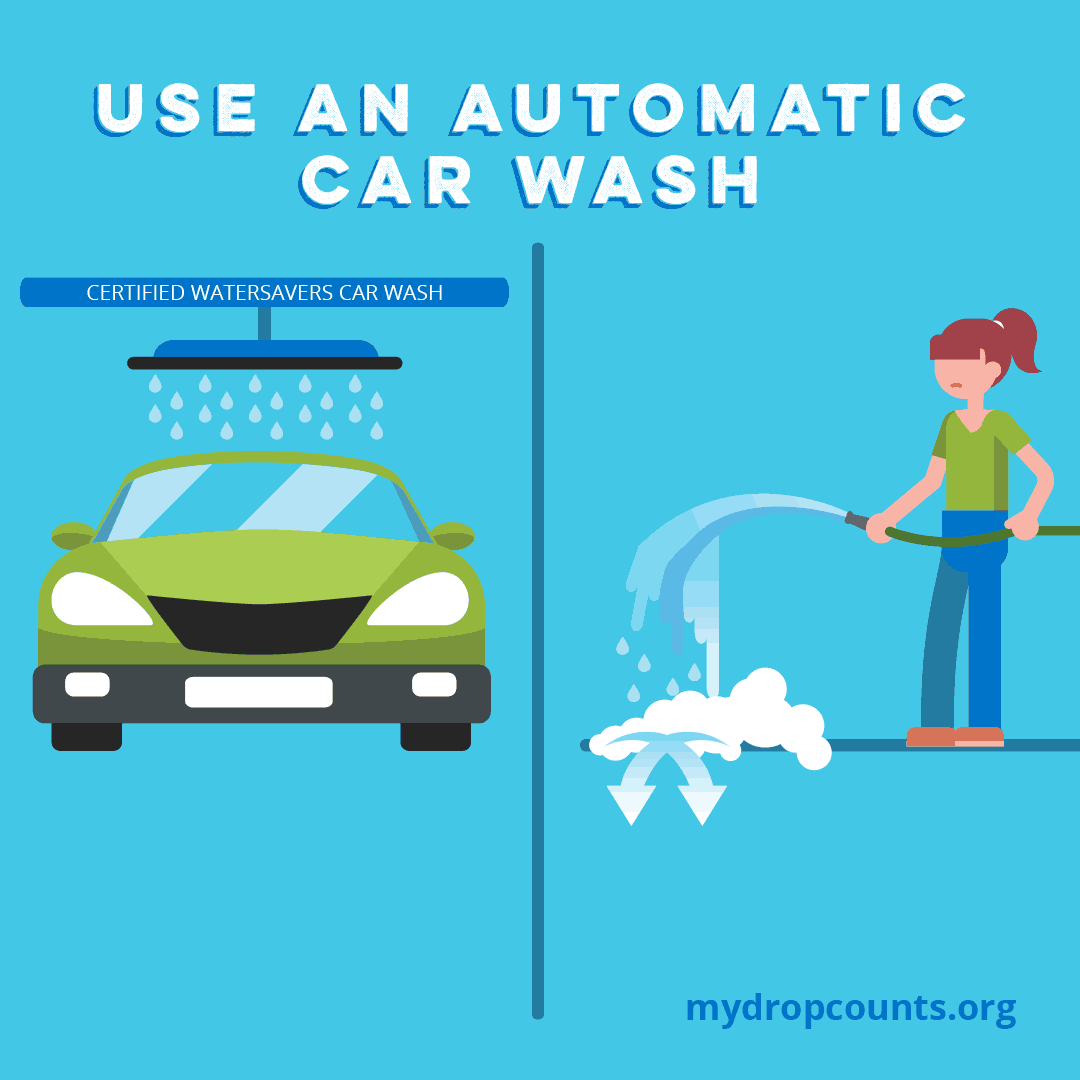
A 10-minute car wash using a standard garden hose can use 100 gallons of water and the used rinse water can contain oils and grease and other toxic substances that pollute the environment when it flows to storm drains and into the nearest creek or stream.
To save water and protect our waterways, take your car to a commercial car wash that recycles water. Commercial car washes are better than your driveway because their drains are connected to a sewer system and the wastewater will be sent to a treatment plant for cleaning. If you must wash your vehicle at home follow these tips:
- Wash on grass or soil (not concrete) which can naturally filter and absorb pollutants.
- Use products that will not harm the environment.
- Use an auto-shut off hose nozzle or low-volume or pressure device to reduce over spraying and wasting water.
- Wash your vehicle when needed rather than once a week.
